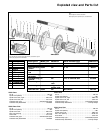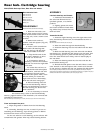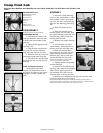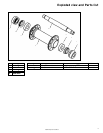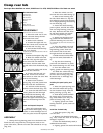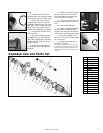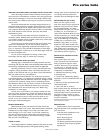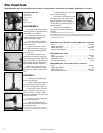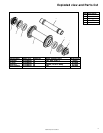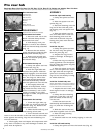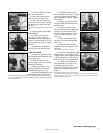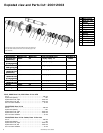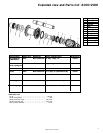
25
2003 Bontrager Service Manual
Important information before you begin with Pro series hubs
Some Bontrager hubs utilize DT Swiss internal parts.
This manual is intended for retailers with the appropriate
skills and knowledge to work on these hubs. Please read
the entire section before carrying out any kind of mainte-
nance work.
This manual details the principle design features of
DT Swiss hubs and also provides instructions as to main-
tenance and repair work. Please take special care to use
only original DT Swiss special tools in order to undertake
the work details in this manual. Use only DT Swiss
replacement parts.
In this manual, the hubs are shown installed in a
complete wheel. Maintenance work should be carried out
on complete wheels where possible. Otherwise, some steps
can not be carried out correctly.
This manual provides technical and spare parts infor-
mation for these hubs. If you have further questions
about these hubs regarding technical information, sup-
port, or warranty, they should be directed to Bontrager
Technical Support via phone or on the Bontrager web site
at www.bontrager.com.
In the event of improper servicing of the hubs,
Bontrager has the right to refuse any warranty.
Special information before you begin
Bearing play: A small amount of play between the free-
hub body and the hub shell is automatically eliminated when
the wheel is installed and the quick release is tightened.
Bearing resistance: New or newly re-built hubs have
a higher rolling resistance than used hubs because the
grease in the freehub has not yet been evenly distributed
and the seals have not yet bedded in.
Aluminum freehub bodies: For hubs with an alumi-
num freehub body, we recommend cassettes using a solid,
one piece spider like the Shimano Dura-Ace, Ultegra, XTR,
or Deore XT. Cassettes using loose or bolted sprockets
like Shimano Deore LX can cause notches in the freehub
body. This can cause difficulties when later removing
the cassettes from the freehub body (see “Removing
Cassettes” on this page).
Check your work: Before use, always check the rear
hub for proper functioning. Check the freehub body and
the ratchet mechanism. If they do not function correctly,
the rear hub should not be used until the fault is cor-
rected. If you are unable to correct the fault, consult
Bontrager Technical Support.
Regular Maintenance
Maintenance of the rear and front hubs should be
performed at least once a year. This maintenance schedule
is based on normal usage. If you ride your bike more
than average, or in rain, snow, or off road conditions,
service your bicycle more often than the schedule sug-
gests. If any part appears to be malfunctioning, inspect
and service it immediately.
Things to avoid
Avoid high pressure washing systems, like those at most
car washes. The high pressure can bypass bearing seals,
letting water into the bearings. Do
not use any kind of solvents or
tensides- this can damage the hub.
Determining the year of hub
There are two styles of rear
hub, with some unique parts and
different instructions for assem-
bly and disassembly. To deter-
mine which hub type you will be
working on, it is necessary to
remove the freehub. With the star
ratchet removed, you will be able
to see the right side shell bear-
ing. If the bearing is completely
visible due to its 24mm outer
diameter (Fig. FH5), it’s a year
2000 hub. The 2001 model uses
a larger, 28mm diameter bearing
(Fig. FH6) that is partially cov-
ered by the ring nut (requiring
the removal of the ring nut).
Removing the cassette from the
freehub body
The cassette does not need
to be removed from the freehub
body to perform regular main-
tenance. However, if you decide
to remove it, it should only be
removed after the hub has been
completely re-assembled.
1. Release the lockring using
a lockring tool.
2. Loosen the cassette by lightly
tapping it counter-clockwise with the
hammer.
3. Remove all the sprockets from
the freehub body.
4. Use a fine file to remove
bad notches from the aluminum free-
hub body (Fig. 14H). The aluminum
freehub body must be cleaned and
inspected. If any cracks or other
damage is visible, the components
must be replaced.
Note: Notches on the freehub body do not have a negative influence
on the functionality of the freewheel.
Required tools
Maintenance of Pro level hubs
requires special tools, available as TCG
part #211415:
Freehub seal installation tool
Long bearing press
Short bearing press
Special screwdriver
DT Swiss special freehub grease
DT Swiss multi-purpose grease
Spline tool
Fig. FH6
Fig. FH5
Fig. FH7
Pro series hubs
Long
bearing
press
Short
bearing
press
Freehub seal
installation
tool
Spline
tool
Special screw-
driver



